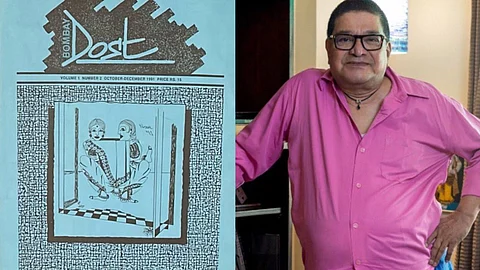
- Home
- न्यूजग्राम
- NewsGram USA
- India
- World
- Politics
- Entertainment
- Culture
- Lifestyle
- Economy
- Sports
- Sp. Coverage
- Misc.
- NewsGram Exclusive
- Jobs / Internships

Key Points:
Bombay Dost, launched in 1990 by Ashok Row Kavi, Sridhar Rangayan, and Suhail Abbasi, was India’s first LGBTQ magazine, aimed at supporting gay and transgender communities
Despite early distribution challenges, the magazine became a revolutionary voice for the marginalised, gaining international readership
After shutting down in 2002 due to funding issues, Bombay Dost was relaunched in 2009
The journey has always been about achieving freedom for the LGBTQ community—the freedom to live without discrimination, to express oneself openly, to enjoy equal rights, and to experience personal autonomy. While the fight for these rights has gained momentum in modern times, earlier voices were largely suppressed. Revealing one’s sexuality, even to family members, was once considered unthinkable, as being gay was widely deemed unacceptable by society.
During the 1990s, the emergence of India’s first gay magazine opened the door to gay rights activism and paved the way for a future where queer communities would be celebrated for their diversity and resilience.
How did India’s first gay magazine, Bombay Dost, become a tool of revolution for the marginalised communities? Let's read further to find out.
Bombay Dost magazine was a venture envisioned in 1990 by activist and journalist Ashok Row Kavi, along with Sridhar Rangayan and Suhail Abbasi. Kavi was one of the first people in India to speak publicly about homosexuality. His vision behind creating the magazine was to support gay individuals and bring visibility to their issues. Bombay Dost aimed not only to support the rights of gay people but also to address issues faced by the transgender community.
In 1994, Kavi, Rangayan, and Abbasi co-founded The Humsafar Trust, a Mumbai-based NGO that advocates for the rights of the LGBTQ community. The trust also took on the responsibility of publishing the magazine's newsletter. Humsafar Trust is one of the oldest gay organisations of India.
The first issue of Bombay Dost was a 16-page publication that served as a manual for gay men—offering guidance on how to live freely, confidently, and without fear. The magazine initially focused on topics such as queer politics, sexuality, HIV/AIDS, and the day-to-day challenges faced by gay men in Indian society. The magazine, subtly packed in brown paper and sold for just ₹16, faced distribution challenges. After running for nearly a decade, Bombay Dost ceased publication in 2002.
Bombay Dost became India’s first LGBTQ magazine, selling around 650 copies in its early days. It was discreetly distributed locally with the help of street vendors. The magazine became the voice of the minority community and served as a platform to highlight issues often ignored by the mainstream media.
Its authenticity soon earned it popularity beyond India. Founder Ashok Kavi received letters not only from across the country but also from nations such as Iran, Tajikistan, Afghanistan, and Dubai. At its peak, the editors were receiving around 3,000 letters from readers every week.
The Khush Khat (“Happy Letters”) section became widely known for enabling readers to exchange correspondence and arrange meetings. Demand for Bombay Dost grew so much that it was sought after in Pakistan, the Central Asian Republics, and other regions.
The magazine featured a wide range of columns—from entertainment to gossip. The Papa Passion section focused on health issues, offering advice on sexual health and guidance on coming out to parents. The Pushtak column allowed readers to share opinions and recommendations, while in 1996, a gossip section called Poison Pudi was introduced. Poison Pudi carried stories about men in Bombay who discovered their sexuality after marriage.
After shutting down in 2002 due to funding issues, the revolutionary gay magazine returned in April 2009 with the tagline “Bolder Than Ever.” From its initial pledge in the charter of the first issue to connect people with alternate sexualities across South Asia, Bombay Dost resumed publication with renewed purpose. The timing of its relaunch coincided with the landmark Delhi High Court judgment decriminalising same-sex acts, which spoke volumes about its relevance.
Following its revival, Bombay Dost began featuring cover pages with well-known queer personalities. Notably, Bollywood actor Imran Khan appeared on the cover for the magazine’s 20th anniversary, while actress Kalki Koechlin became the first woman ever to be featured on the cover of a popular gay magazine.
Bombay Dost, one of India’s first registered gay magazines, hopes to carry forward the vision of its founders beyond borders. As Kavi describes it, the magazine is “walking activism,” aiming to connect people and shed light on issues often disregarded by many. It serves as a true dost (friend) to those who struggle to find their voice. [Rh/VS]
Also Read:
